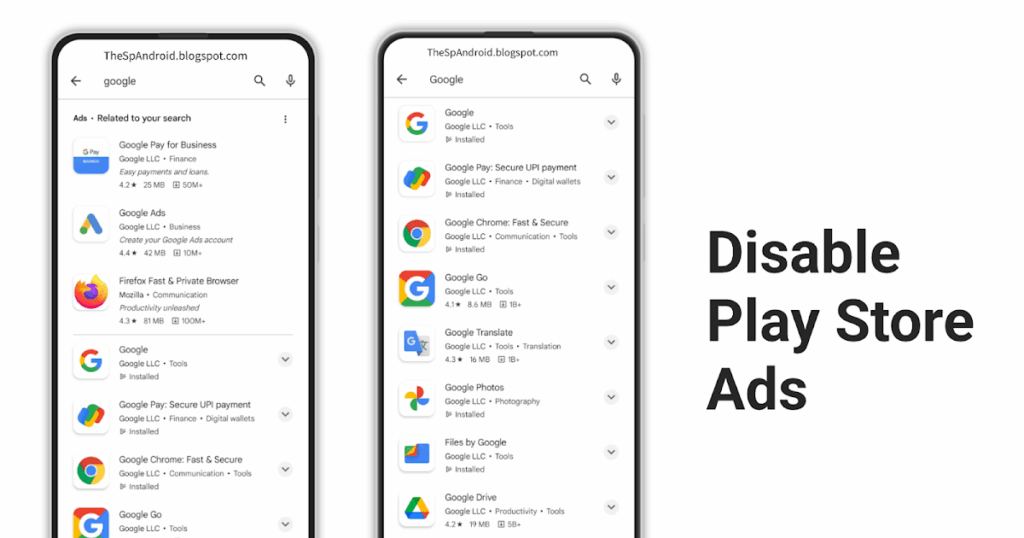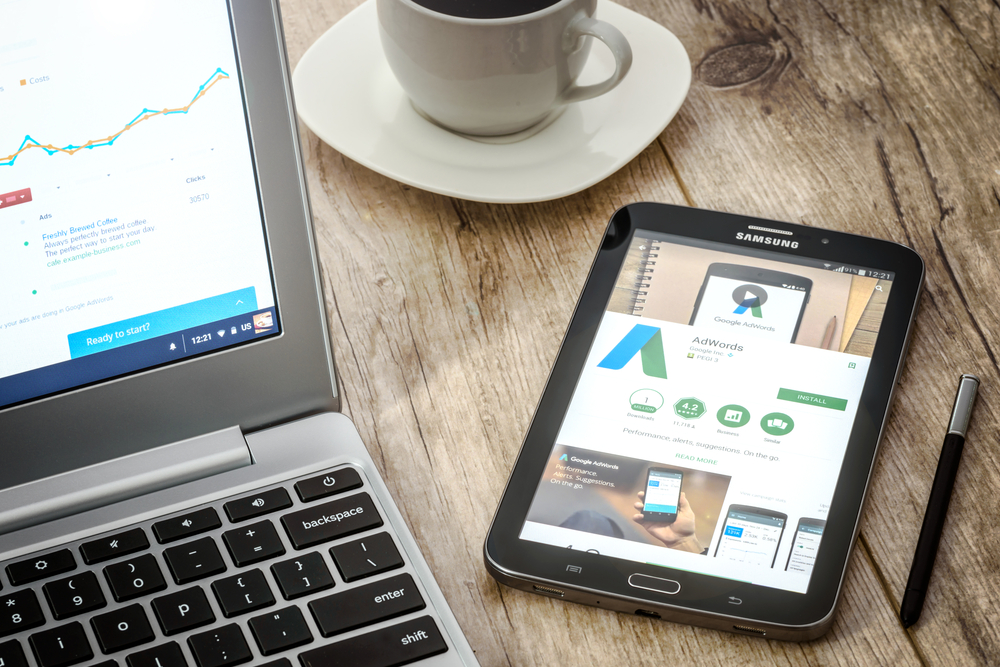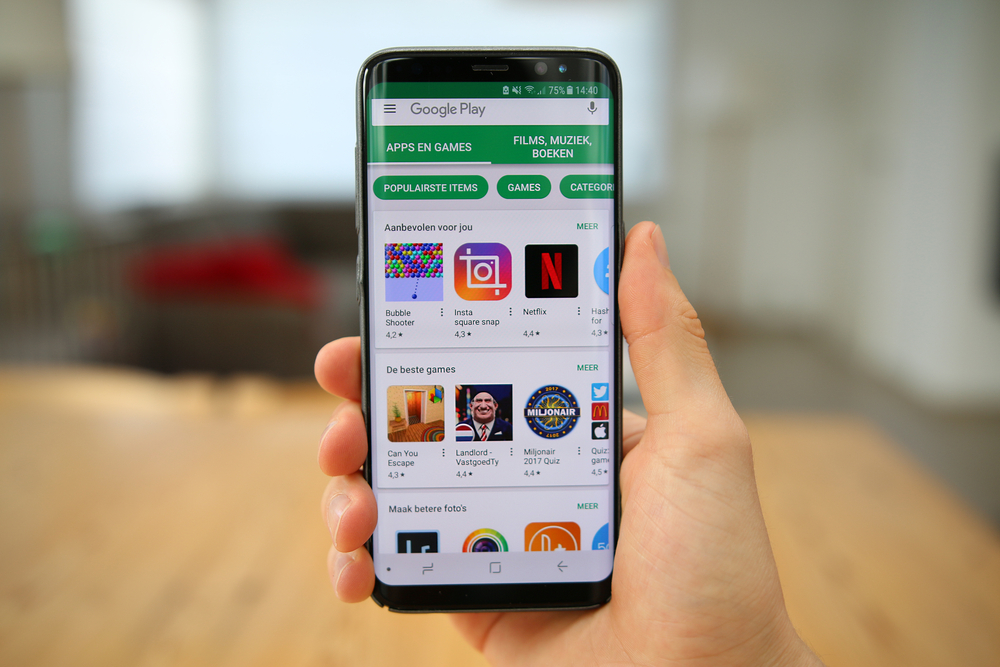How to advertise on Google Play

Advertising on Google Play is one of the most effective ways to help your app reach potential users and increase installs. With the Google Ads platform, you can easily launch an app promotion campaign on the Google Play Store, displaying your app in prominent positions such as app search results, the explore tab, YouTube, or within other apps. In this article, RentAds will provide a step-by-step guide on how to advertise on google play from A to Z.
Everything You Need to Know About Advertising on Google Play

Google Play advertising is a type of app marketing campaign conducted through the Google Ads platform. It helps developers or businesses promote their mobile apps to the right target audience across Google’s entire ecosystem. These ads can appear in various placements such as the Google Play Store, Google Search, YouTube, Gmail, and millions of websites within the Google Display Network.
A standout feature of Google Play advertising is its intelligent automation. You don’t need to design each ad format separately; instead, you simply provide a few basic elements such as a headline, description, images, videos, and a budget. Google’s system will automatically combine these assets to create the most optimized ads and deliver them to users who are most likely to install your app.
Objectives of Google Play advertising
The primary goal of Google Play advertising is to increase app installs from the right users. However, you can also customize your campaign to target other objectives, such as boosting in-app engagement, increasing revenue from purchases, or improving long-term user retention. This is especially beneficial for apps that rely on ad-based or in-app purchase business models. Google Play ads also support strategies that balance both the quality and quantity of installs. You can target users who are more likely to engage with your app over the long term, rather than just focusing on short-term download volume.
Who should use Google Play advertising?
Google Play advertising is suitable for a wide range of users — from individual developers looking to bring their apps closer to potential users, to large enterprises aiming to expand market share, or tech startups seeking to create a buzz during their product launch. This advertising format is especially ideal for those who want to leverage Google’s data and artificial intelligence to automatically optimize ad performance, saving time while still achieving significant results.
How do businesses benefit from advertising on Google Play?
Google Play offers many practical benefits; it is a tool that helps business developers achieve their goals quickly.
Increase app installs
One of the most obvious benefits of running ads on Google Play is the ability to boost app installs in a short amount of time. Instead of waiting for users to discover your app on their own, Google Ads allows you to showcase your app in prominent positions on the Google Play Store—where users actively search for and explore new apps. Ads appear right when users have a need, increasing the chances that they will download and try your app immediately.
Reach the right audience with smart technology
Google uses machine learning algorithms to automatically deliver ads to users who are most likely to install and use your app. Based on search history, app usage behavior, location, age, gender, and many other factors, ads are optimized to reach the right target audience. This helps you maximize your budget and improve campaign performance.
Optimize advertising costs
Another strength of Google Play advertising is its smart bidding model, which allows you to bid based on desired actions, such as app installs or in-app purchases. The system automatically adjusts bids and budget allocation to maximize results within your allowed spending limits. This makes it easier to manage your budget and ensures that you only pay for interactions that truly deliver value.
Increase brand awareness in the digital environment
Even if users don’t install your app right away, consistently showing your ads across platforms like Google Play, YouTube, Gmail, or the Display Network helps build brand awareness and keep your app’s name top of mind. With remarketing features, you can re-engage users who have previously interacted with your ads or visited your app, thereby increasing conversion rates in future ad impressions.
Easily track, analyze, and optimize performance
Google provides powerful tracking tools such as Google Ads, Firebase, and Google Analytics, making it easy for you to measure ad performance from impressions and clicks to installs and post-install behavior. This enables timely adjustments, A/B testing, and optimization of ad content, placement, or audience segments to continuously improve results over time.
An Overview of how to advertise on google play Ads Instantly

After gaining an overview of Google Play advertising, you’re now ready to start setting up your campaign step by step as outlined below.
Step 1: Set up your Ad campaign
Log in to Google Ads and select the campaign type “App promotion.” This is a crucial step that allows the system to recognize that you want to promote a specific app. Next, you’ll be asked to enter the app name or its Google Play link, from which Google will automatically identify the app and begin optimizing the campaign settings. Additionally, you’ll need to name your campaign to make it easier to manage later on
Step 2: Choose the Right Campaign Objective
Choose the main objective for your ad campaign. Defining the right goal not only helps you target the right user group but also has a significant impact on budget efficiency and ROI (Return on Investment). Google offers two common options: increasing app installs and driving in-app actions.
Step 3: Create compelling ad content
Unlike traditional advertising, Google Play ads don’t require you to create individual ad creatives. Instead, you simply provide a headline, description, video, and app screenshots. Google will automatically mix and match these elements to generate multiple ad variations and display the most relevant ones to each user. At this stage, it’s crucial to ensure that your content is clear, highlights the app’s key benefits, and is accompanied by eye-catching visuals to attract users. If you have an app demo video or an intro clip, make sure to use it, as video formats typically deliver higher engagement rates.
Step 4: Set targeting locations, languages, and budget
Select the countries, regions, and languages you want to target. If your app is intended for Vietnamese users only, choose “Vietnam” and set the language to “Vietnamese.” On the other hand, if you’re aiming to expand internationally, select multiple locations that align with your global strategy. Next, you’ll need to set a daily budget and choose a bidding strategy (CPI or CPA). Google will use this information to deliver your ads efficiently, ensuring you stay within budget while still meeting your campaign goals.
Step 5: Track your campaign and evaluate its effectiveness
Once your campaign is live, you should regularly monitor key metrics such as the number of installs, conversion rate, cost per install (CPI), or cost per action (CPA) if your goal is in-app actions. Google Ads provides an intuitive dashboard that makes it easy to track and compare performance across campaigns. You can also use Firebase or Google Analytics for Firebase to monitor in-app user behavior and evaluate the quality of your installs. Based on the collected data, you can carry out optimization steps such as updating ad content, adjusting your budget, or expanding targeting to improve overall campaign performance.
Contact Info
You need a Facebook advertising account but don’t know any reputable provider. Coming to Rentads is where you will experience what you need google ads account for rent prestige, high trust, and professional consulting and service support for customers.
Frequently Asked Questions
When running game ads on Google Play, there are several key points to keep in mind to optimize your campaign’s performance. First, clearly define your target players based on age, interests, and behavior. Next, make sure your ad content is engaging, visually appealing, and highlights the game’s standout features such as graphics, gameplay, or unique elements. Additionally, selecting the right keywords is essential to improve visibility and drive installs. Finally, don’t forget to monitor performance and continuously optimize your budget, ad creatives, and targeting strategy to achieve the best possible results.
Google sets strict standards to ensure that app advertisements provide a positive and transparent experience for users. Specifically, ad content must be honest, non-deceptive, and accurately reflect the app’s functionality. Additionally, ads must not include fraudulent content, violate copyright, or promote dishonest behavior. The visuals and text used in ads should also be clear, professional, and non-offensive. Adhering to these standards helps your campaigns get approved more quickly and maintain long-term effectiveness on Google Play.